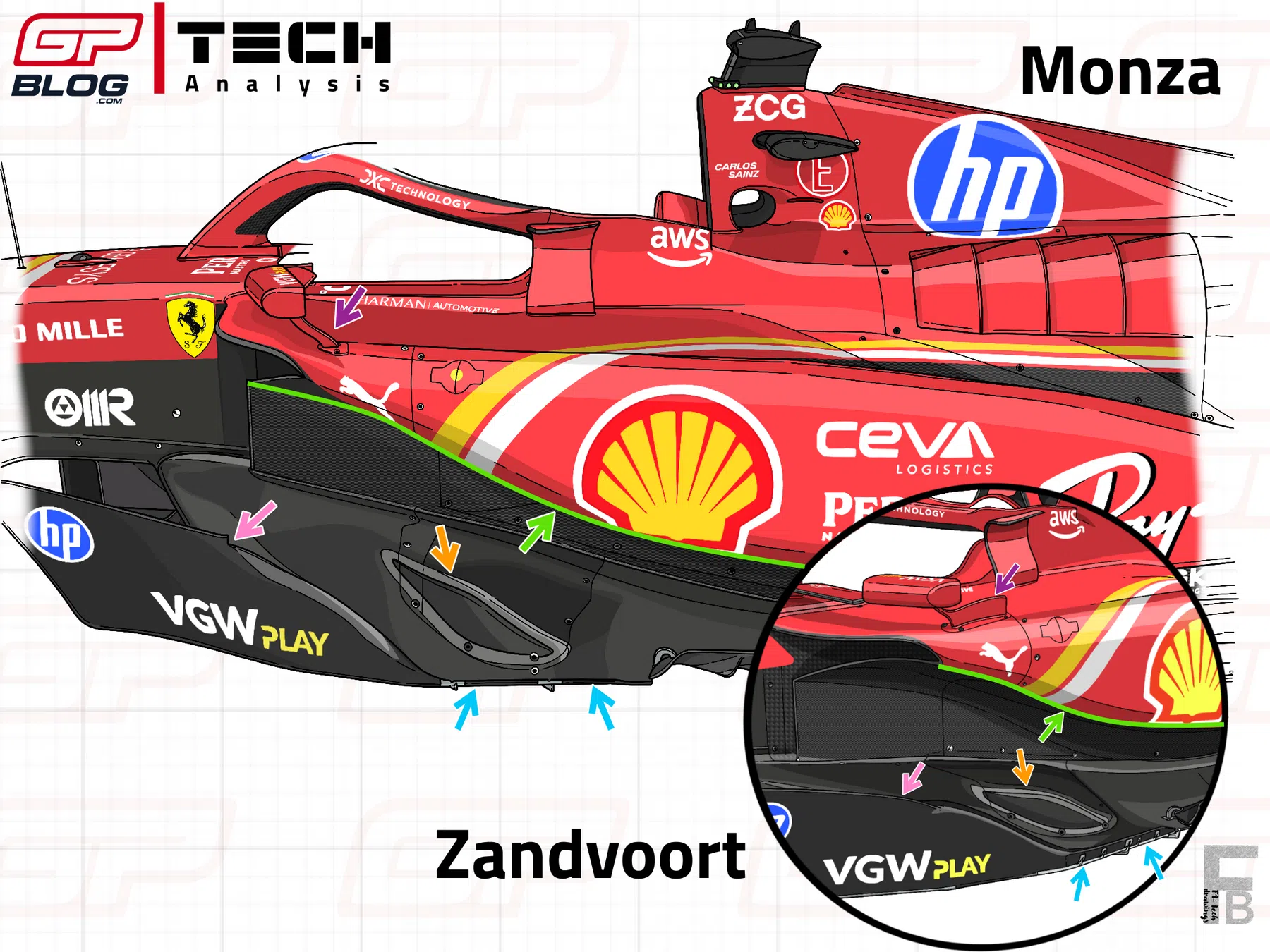Tech Preview: How Mercedes and Ferrari can cause Red Bull headaches in Baku
Tech

After an impressive victory from Charles Leclerc at the Italian Grand Prix, Ferrari is now ready to challenge McLaren on a track that should suit the SF-24 very well. The Baku City Circuit, known for its long straights and tight slow corners around the castle, has all the peculiarities that could exploit Ferrari’s car strengths and allow both Sainz and Leclerc to challenge the two McLarens. Here's why.
The perfect mix between Monaco and Monza
The Baku City Circuit is one of the most peculiar on the calendar: the first sector is characterised by a series of 90-degree corners, the second sector shows a series of slow chicanes and the tightest section of the calendar (known as the “Castle section”). In contrast, the last sector is characterised by a 2 km straight where having a high top speed is crucial in qualifying and overtaking during the race.
As a consequence of the layout, finding the perfect set-up for the engineers is extremely challenging: on the one hand, this circuit requires a Monaco-style mechanical set-up, very soft on the longitudinal axle due to the majority of slow-speed corners and chicanes. On the other hand, the very long straights force teams to adopt very skinny rear wings, which could, however, trouble the rear tyres.
The balance between the mechanics and the aerodynamics is particularly evident around here: if the engineers are able to find a good mechanical set-up that allows the car to have a very good speed in slow corners, good traction and no bouncing issues, they can then unload the car (from an aero point of view) while still being competitive in the middle sector. On the other hand, if the car shows bouncing issues, then the team is forced to raise it, losing both downforce and efficiency.
The mechanical set-up is also fundamental to put the tyres into the right working window and make them work at their best throughout the stint. A very common problem around this track is graining on the front tyres, which is generated when the core of the tyre doesn’t reach its optimal working temperature, while the surface heats up, As a consequence, when the car turns, the hotter rubber tears and slides along the surface. This happens on this track due to the very low-energy asphalt and the lack of high-speed corners.
For this reason, Pirelli usually bring the 3 softest compounds of their set (the C5, C4 and C3), with the softest used only in qualifying and the hardest compounds used in the race mainly to keep graining under control, even though the high temperatures expected for the weekend should limit this problem.
It’ll be extremely interesting to see which experiments teams conduct during free practices to address these issues and find the perfect setup.
McLaren with a more loaded set-up, other top teams with Spa wings
Having looked at which compromise should work best around Baku, it’s possible to predict a very close battle between Ferrari and McLaren again this weekend.
The track layout, with slow corners and long straights should be favourable to the Maranello car, which has always been very good from the mechanical point of view this season. Moreover, the updates introduced last time out in Monza seemed to have worked really well, increasing the amount of downforce generated by the Venturi channels and the bodywork of the car.

For this weekend, the team decided to adopt a medium-low-downforce rear wing, the same spec used in Spa. This should provide a good top speed while guaranteeing a little bit more downforce, useful to avoid overheating on the rear tyres.
At the same time, McLaren still seems to have the car to beat: the MCL38 proved to be competitive on all layouts and in all conditions, and its versatility could be a determining factor this weekend in Baku.
Moreover, the Papaya car has always been super strong mechanically (they adopted a slightly higher downforce rear wing to better balance their car) and very easy for the engineers to tune. Consequently, it should not be surprising to see Norris and Piastri competitive straight away from FP1.
Beyond this, it’ll be interesting to see how the MCL38 tackles the graining issues: during the Italian Grand Prix weekend, Norris complained of graining during the race, and Piastri, too, wasn’t able to make a one-stop strategy work as Leclerc did. For this reason, it’ll be important to understand from free practices if they’ve solved this issue or if it’s a weakness of the car.
Red Bull and Mercedes will be in the eye of the storm too this weekend: the Milton Keynes team will have to prove to have find a temporary solution to the RB20 drivability issues (waiting for the upcoming upgrades in Austin), which badly affected the performance in Monza, putting the Constructors’ Championship in McLaren’s hands.
On the other hand, the team directed by Toto Wolff will go back on some of their upgrades, as confirmed by Lewis Hamilton when speaking to GPblog and others: “I think there's lots of question marks on a lot of it. We're just trying to understand it. There could be a number of things. It could be track dependent, it could be the upgrade. My guts tell me it's probably the upgrade, but it’s hard to see the different between the two. We are going try this weekend to go back on some of it and see whether or not we can spot it.”

It’ll be interesting to see if the W15's behaviour will benefit from the changes and regain its competitiveness from Spa. With all these factors to consider, this weekend is announced to offer tight battles on track and exciting challenges from the technical point of view.